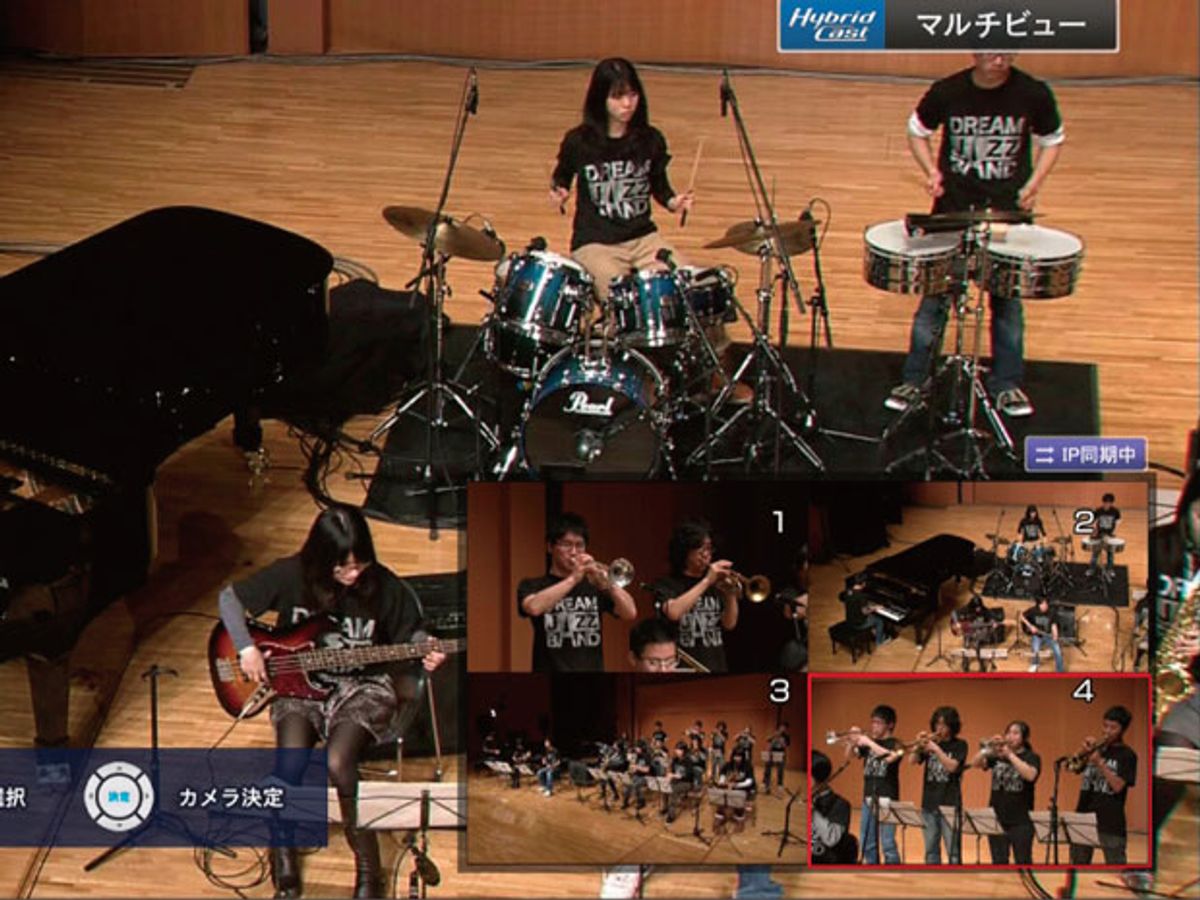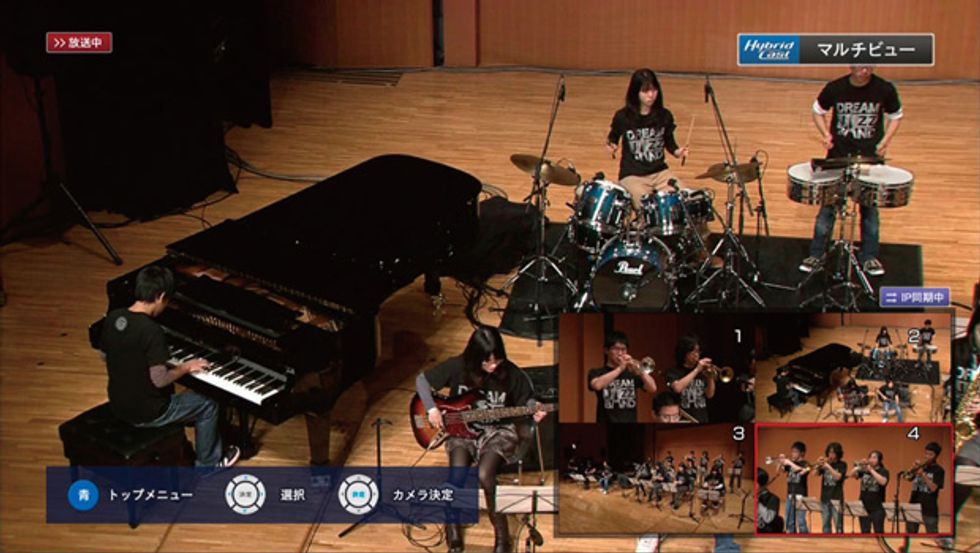15 January 2013—By the end of the year, Japanese audiences will be able to interact with some of their favorite TV programs in ways never before possible. Japan Broadcasting Corp., the country’s public broadcaster (better known as NHK), is putting the finishing touches on a technology dubbed Hybridcast. The system will enable Internet-based content to be tightly integrated with broadcast digital television, similar to what is promised for the Advanced Television Systems Committee 2.0 technology in the United States.
The technology will be made available to broadcasters and third-party service providers to use in a number of ways, according to NHK engineers. For example, it could enable viewers to take part in answering questions in quiz shows; it could call up customizable background information on players and teams during a sports match; or it could be used to simultaneously compare a particular skater’s earlier videotaped performance against an ongoing live performance of a rival skater. NHK promises more-advanced services as the technology matures.
Masaru Takechi, senior research engineer at NHK’s Advanced Broadcasting Platforms Research Division, demonstrated for IEEE Spectrum how it all works, at NHK’s Science & Technology Research Laboratories, in Tokyo, using modified TVs and prototype equipment.
Hybridcast uses an advanced multiplexing scheme based on the MPEG-2 Transport Stream, which combines a television program’s broadcast audio/video data with signals controlling Hybridcast applications. It then broadcasts them over the air to home viewers and via the Internet simultaneously. To call up a Hybridcast service while viewing a program, the user clicks the remote and a request is sent via a set-top box Internet connection to the server of the broadcaster or its Hybridcast service provider, which delivers the program’s dedicated Hybridcast app, written in HTML5. The Internet data is time-stamped to synchronize with the broadcast data signal, and the app uses the data to create one or more information or menu panels in a corner of the screen. The information in these panels could be based on the viewer’s preferences, if these are known to the broadcaster or Hybridcast service provider, or a panel might be interactive and contain changing multiple-choice questions pertaining to a live show.
“This is very different from BML [Broadcast Markup Language, Japan's standard for digital data broadcasting], which is transmitted over the air but cannot connect to a server,” says Takechi. “And it’s different from Internet TV, which gets data from a server, but that data is not directly connected with a TV program.”
NHK is working with several of Japan’s major electronics manufacturers, as well as some local commercial TV broadcasters, to refine the technology. When Hybridcast is introduced later this year, viewers will need to purchase a set-top box, but over time Takechi expects the technology to be incorporated into new TV sets. By the time that happens, he says, more-sophisticated services will be introduced, allowing viewers to use mobile devices, such as tablets and smartphones, as secondary displays to control the service and view additional data.
One such enhanced service Takechi demonstrated added name tags to football players during a recorded game. With another service, he used a prototype tablet to zoom into a recorded dance show and singled out a specific performer; he then created a separate video window around the dancer for close-up viewing. Services for the disabled are another possibility, with devices such as Braille readers. Yet another service under development will allow a group of friends on a social network to communicate with one another while watching the same program from different locations. “We’d be creating a virtual big living room,” says Takechi.
One technical challenge for participating electronics manufacturers will be implementing the synchronization of the TV broadcast content with the incoming Internet data on consumers’ set-top boxes, televisions, and other devices. In addition, NHK must establish standards and regulations for the technology. It is working with domestic standards bodies, including the IPTV Forum Japan, where the adoption of specifications for combining broadcasting and telecommunications services, including Hybridcast, are being discussed.
“Our standards now under development also comply with ITU-T [International Telecommunication Union's Standardization Sector] recommendations for digital TV–enabled services,” says Takechi. “So in the future, we hope to offer this technology for overseas use.”
There’s some precedent for that. Japan’s own Integrated Services Digital Broadcasting standard, which took over completely from analog broadcasting in July 2011 and can transmit to both fixed and mobile devices as well as digital radio, has already been adopted in Argentina, Brazil, Chile, the Philippines, and a number of other countries in South America and Asia.
About the Author
John Boyd covers technology from Japan. In January 2013, he reported for IEEE Spectrum on technology that would turn the Japanese electricity grid into something that resembles the Internet. In July 2012, he tried out Canon’s mixed-reality technology for us.

